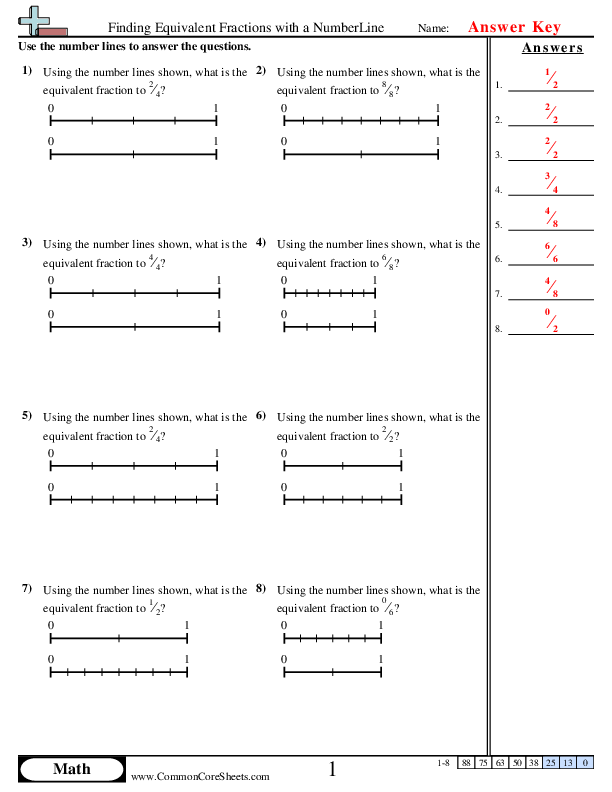Equivalent Fractions With Numberlines
3nf3a


×
Description:
"This worksheet is designed to help children understand and find equivalent fractions using number lines. By presenting eight diverse problems, it aids in converting abstract fraction concepts into visible representations. Each problem encourages the identification of equivalent fractions, fostering a solid grip on basic mathematical principles. Customizable for differing learning levels, this worksheet is an excellent resource for distance learning and can readily be transformed into flashcards for interactive education."

×
Student Goals:
Understanding Basic Fractions ConceptsAfter completing this worksheet, students should have a deep understanding of fundamental fraction concepts. They should be able to clearly define fractions and their parts (numerator and denominator), know how to ascertain fractions on a number line, and comprehend how fractions relate to the concept of division and portions.Develop Skill in Finding Equivalent FractionsStudents will acquire the crucial skill of determining equivalent fractions. Equivalent fractions are fractions that, despite having different numerators and denominators, represent the same proportion of a whole. By comparing fractions on a number line, students can visually interpret and identify equivalent fractions, thus reinforcing this key mathematical concept.Enhance Problem-Solving SkillsBy working on the worksheet, students will enhance their problem-solving skills, critical in mathematics. They should be capable of using established strategies (like using a number line) to solve a problem, analyze and interpret their results, and adjust their methods if necessary, thereby boosting their problem-solving abilities and cultivating mathematical thought.Improve Number SenseCompleting problems involving equivalent fractions on a number line will help students to establish better number sense. Number sense, the understanding of number relationships and the ability to make logical decisions about numbers, is a crucial part of early math learning. Students should have improved their ability to visualize and comprehend how numbers, particularly fractions, fit together.Foster Precision and AccuracyStudents should have cultivated precision and accuracy in their mathematical workings. From setting out their solutions neatly, to correctly positioning fractions on a number line, to accurately determining equivalent fractions - this worksheet will have taught the students to value accuracy in their computations and representations, a critical skill for more advanced math work.Promote Autonomy in LearningLastly, the worksheet encourages students to take charge of their learning by working independently. They should be able to complete similar exercises on their own, using the techniques and comprehension they've developed, fostering an attitude of self-reliance and confidence in their math abilities.
